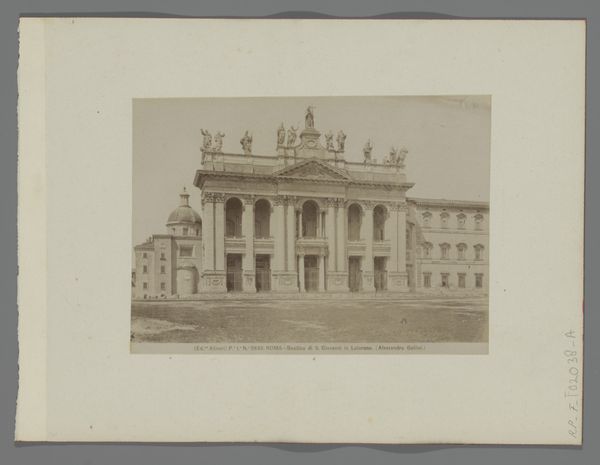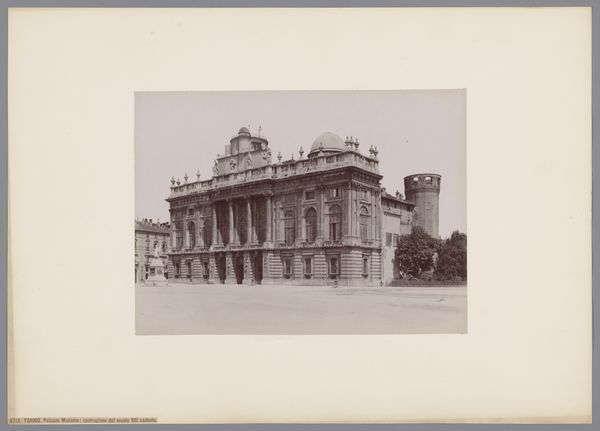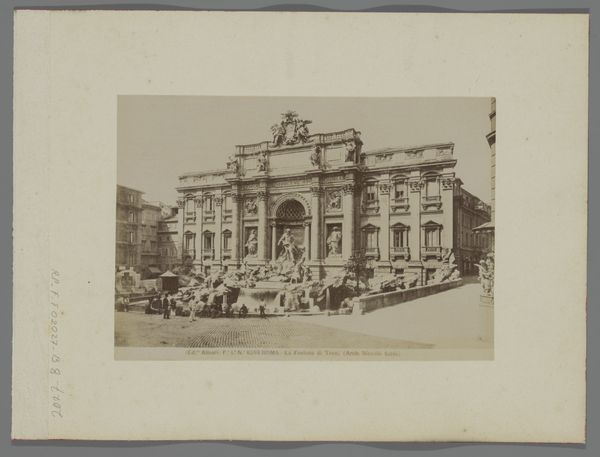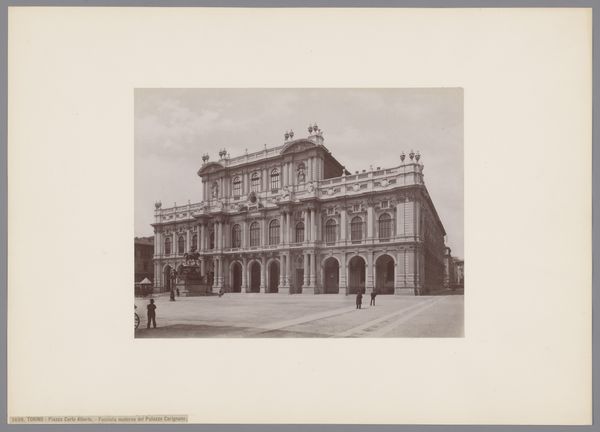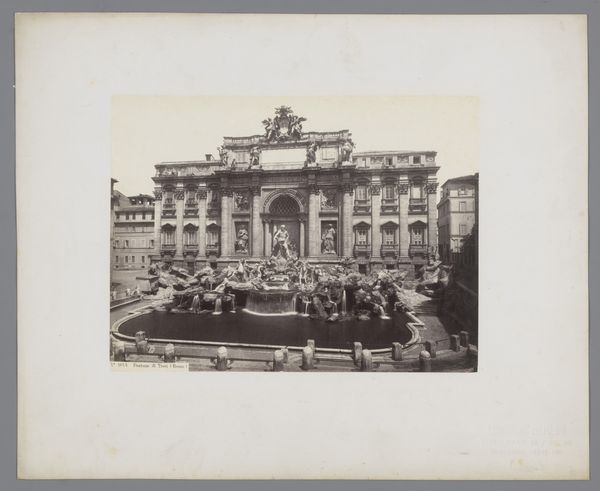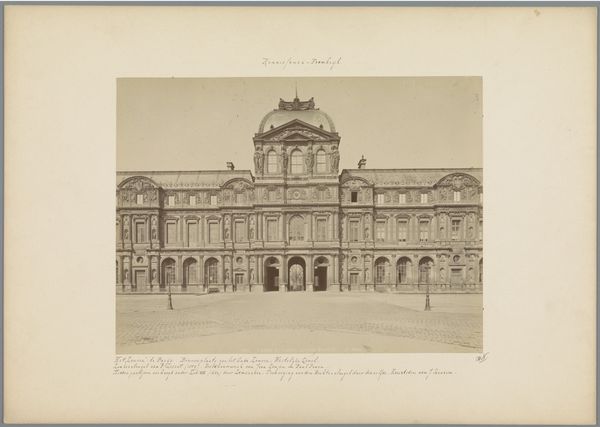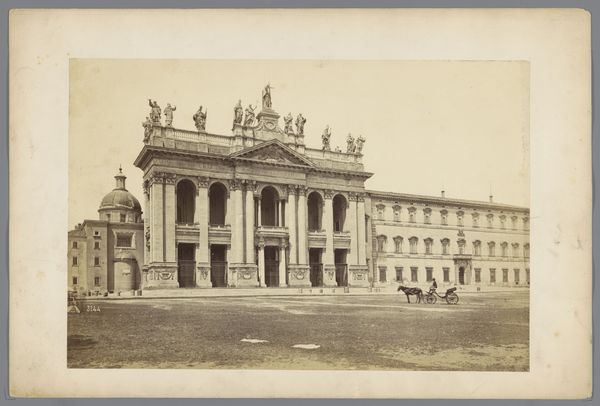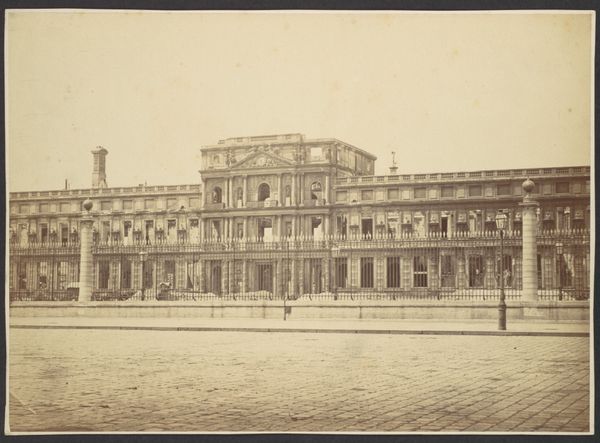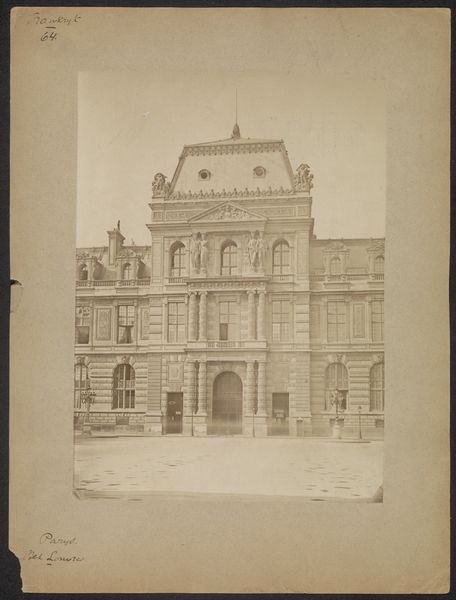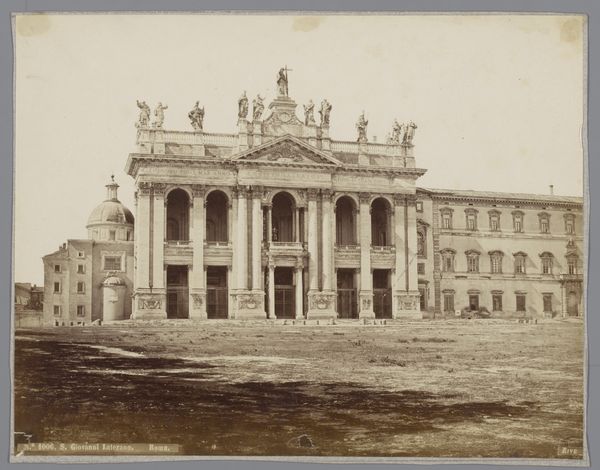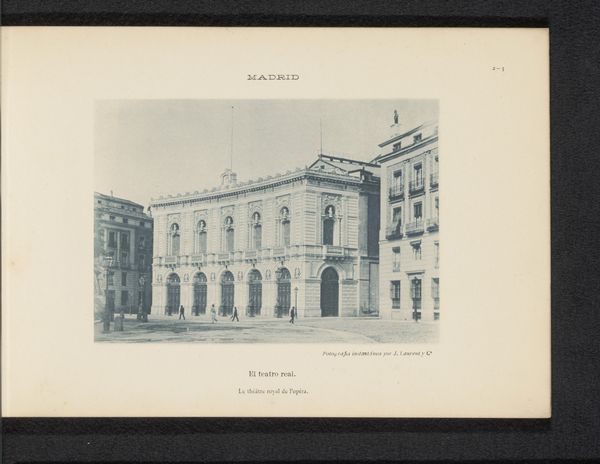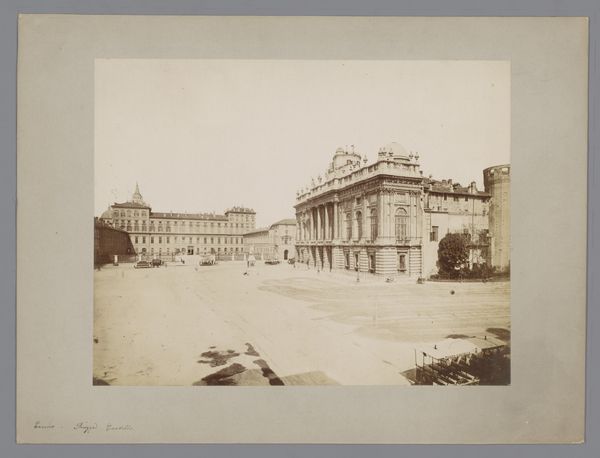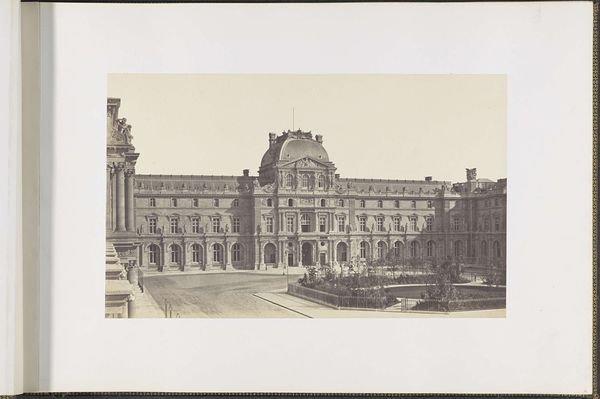
Dimensions: height 321 mm, width 382 mm
Copyright: Rijks Museum: Open Domain
Curator: Here we have an albumen print from between 1867 and 1874 by Sommer & Behles, showing the Basilica of St. John Lateran in Rome. Editor: It’s instantly imposing, isn't it? The light has this way of almost… flattening the building. It makes it seem less like a place and more like an idea of a place. What I am seeing is history frozen in a sepia dream. Curator: That flatness, as you call it, comes partly from the photographic technique of the time but, more significantly, highlights the building's role. Those massive columns and statuary weren't just for show. Editor: Ah, yes! They’re meant to project power, to impress and inspire. Those classical elements are practically screaming "Rome!"—continuity, authority. What does this choice of architectural language tell us about cultural memory and continuity in a changing world? Curator: The choice to frame it in a Romantic style even contributes to its symbolism, giving viewers a feeling that goes beyond documenting reality. Editor: Absolutely! Romanticism isn’t just about pretty landscapes. There’s often this tension between the sublime and the everyday, this yearning for something beyond what's immediately present. The almost monochromatic presentation of St. John Lateran emphasizes this symbolic power. Every stone tells a story, every arch resonates with history, and every statue carries centuries of cultural meaning on its shoulders. Curator: Do you get a sense of Rome and this site specifically as representing this symbolic weight of history as a photographer? I suppose photography's purpose as being documentary must interact strangely. Editor: Precisely, because isn’t the documentary inherently a narrative, a chosen point of view? By the 1870s photography started being seen as “truth,” and this adds to this artwork. It lends it gravitas while allowing Romantic interpretations to linger. And for me, what sticks with me most isn't just the Basilica itself but that feeling that photography gives—a snapshot into the human journey through the ages. Curator: Beautiful. For me, too, it's this reminder of how photography itself can carry and reshape cultural memory.
Comments
No comments
Be the first to comment and join the conversation on the ultimate creative platform.
